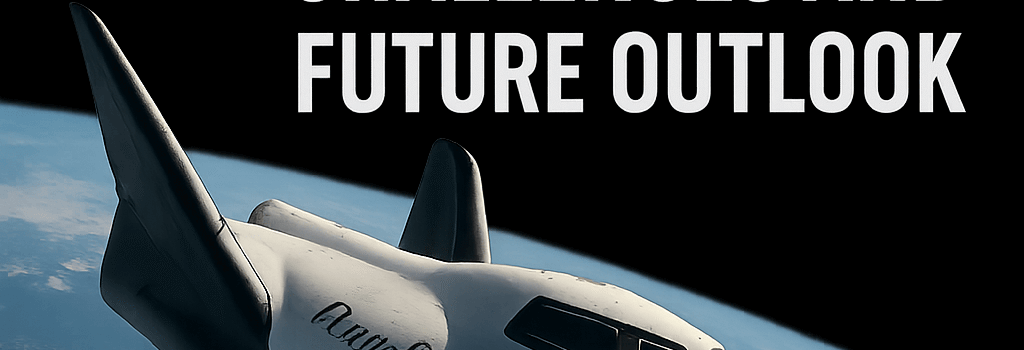Dream Chaser’s Journey: Challenges and Future Outlook

Nearly 23 years after its concept was unveiled, Sierra Space’s Dream Chaser spaceplane remains Earth-bound. Fans of its Space Shuttle–inspired design continue to wonder: when will this reusable, runway-landing vehicle finally reach orbit? Despite significant progress, the answer remains elusive—and it almost certainly won’t be before 2026.
Program Status and NASA Partnership
Under NASA’s Commercial Resupply Services 2 (CRS-2) contract, Sierra Space is slated to conduct at least six cargo missions to the International Space Station (ISS). Dream Chaser’s first operational flight—named Tenacity—will deliver up to 5,500 kg of pressurized cargo. The vehicle uses an Atlas-style cargo module called Shooting Star for unpressurized payloads and station disposal burn-up.
Software Certification: Eyes on Reliability
Learning from Boeing’s 2019 Starliner Orbital Flight Test, NASA now mandates end-to-end flight software validation before ISS approaches. Dana Weigel, NASA’s ISS program manager, recently confirmed that Sierra Space is executing:
- Integrated Test Campaigns covering guidance, navigation, and control (GNC) algorithms.
- Fault-injection Drills to verify redundancy management across avionics units.
- Hardware-in-the-Loop (HIL) Simulations for both ascent and deorbit sequences.
“Software certification isn’t a checkbox,” Weigel explained. “It’s a rigorous sequence of simulations, test flights, and anomaly resolution.” Dream Chaser’s avionics stack is built around the LEO Command Processor, a dual-fault tolerant computer with DO-178C Level A safety requirements.
Propellant System Engineering Challenges
Dream Chaser employs 28 small thrusters arranged in three clusters: 12 aft Vernier thrusters for precise attitude control, 8 orbital maneuvering engines, and 8 landing-finalization thrusters. Each engine cycles between three thrust settings (100 N, 400 N, and 1,200 N). Sierra Space chose a green propellant mix—kerosene (RP-1) and 90% hydrogen peroxide—to avoid toxic hypergols, enabling runway recovery without hazmat suits.
The trade-off is complexity. Peroxide concentration must remain within ±2% during ground storage to ensure consistent chamber pressures. Recent spurts of decomposition in test stands delayed certification:
- Valve seal degradation under thermal cycling
- Contaminant buildup in feed lines after extended idle phases
- Transient pressure spikes in rapid-thrust transitions
Sierra Space has now implemented upgraded ceramic-lined valves and an active catalyst bed purification system. Final Integrated Safety Review (ISR) sessions are scheduled for Q3 2025.
Launch Vehicle Scheduling and Manifest
Dream Chaser will ride ULA’s Vulcan Centaur rocket, whose maiden flight occurred in April 2026. Vulcan’s upcoming National Security launch on May 2 and a constellation deployment in July fill its manifest through year-end.
Originally earmarked for Vulcan Flight 2 in October 2024, Dream Chaser missed that window; a mass simulator flew instead. Sierra Space now targets Vulcan Flight 5 in mid-2026, pending production slot availability. ULA’s current backlog extends into 2027, so any further slip in Dream Chaser’s readiness could push the first flight into late 2026 or early 2027.
Market Outlook and Commercial Prospects
Commercial space ventures are diversifying: SpaceX’s Cargo Dragon remains the workhorse for ISS logistics; Northrop Grumman’s Cygnus offers additional capacity. Dream Chaser’s unique runway landing, precise delivery capabilities, and gentler G-forces (< 1.5 g during reentry) make it attractive for sensitive payloads like biological experiments and small satellites.
“Runway landings open up commercial research avenues that parachute-landed vehicles simply cannot,” says Dr. Kavita Patel, payload systems lead at a leading biotech firm. “Control over reentry trajectory and ground processing saves days of turnaround time.”
Additional Analysis
Thermal Protection and Reentry Dynamics
Dream Chaser’s thermal protection system (TPS) uses textile-reinforced ceramic tiles and advanced ablative panels at leading edges. During atmospheric reentry at Mach 25, peak heating rates approach 1,500 W/cm². Ongoing arc-jet tests are verifying tile adhesion under repeated flight cycles.
Comparison with Competing Vehicles
- Cargo Dragon: Proven, rapid return, but splashdown recovery.
- Cygnus: Larger pressurized volume, single-use.
- Dream Chaser: Reusable, runway landing, green propellants.
Each platform offers trade-offs in turnaround time, payload sensitivity, and operational cost.
Looking Ahead
Sierra Space aims to finalize propulsion and software certification by Q4 2025. With NASA’s provisional go-ahead and ULA’s manifest windows, an uncrewed fly-by mission could launch as early as March 2026. A full berthing flight remains contingent on successful demonstration and potential contract modifications to accelerate ISS rendezvous authority.
For now, Dream Chaser’s devotees will continue their vigil—hoping that this next-generation spaceplane finally turns dreams into orbiting reality.